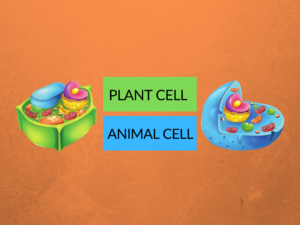Difference Between a Lysosome and Peroxisome
As microscopic organelles found within cells, lysosomes and peroxisomes both play essential roles in cellular metabolism. However, there are significant differences between the two organelles in terms of their structure, functions, and biochemical activities. Understanding these differences is crucial for grasping their respective contributions to cellular processes. In this article, we will explore the characteristics, examples, uses, and differences between lysosomes and peroxisomes.
What is a Lysosome?
A lysosome is a membrane-bound organelle found in eukaryotic cells. It is responsible for the digestion and recycling of various cellular materials, including macromolecules, pathogens, and cellular debris. Lysosomes contain a variety of hydrolytic enzymes, such as proteases, nucleases, and lipases, which degrade these materials into simpler compounds.
Examples of Lysosomes:
1. Phagocytic cells, like macrophages, contain lysosomes that aid in the digestion of engulfed pathogens.
2. Lysosomes in liver cells participate in the breakdown of excess glycogen into glucose molecules.
3. Lysosomal storage disorders, such as Tay-Sachs disease, involve the malfunctioning of lysosomal enzymes.
What is a Peroxisome?
Peroxisomes are small, membrane-bound organelles present in eukaryotic cells. They primarily perform oxidative reactions, especially those involved in the breakdown of fatty acids. Peroxisomes are involved in various metabolic processes, including the detoxification of harmful substances, lipid metabolism, and the production of reactive oxygen species (ROS).
Examples of Peroxisomes:
1. Liver cells contain peroxisomes that aid in the detoxification of alcohol and other harmful compounds.
2. Peroxisomes are responsible for the breakdown of very long-chain fatty acids into shorter ones that can be further metabolized.
3. In plant cells, peroxisomes are involved in the process of photorespiration.
Differences Between Lysosomes and Peroxisomes
| Difference Area | Lysosome | Peroxisome |
|---|---|---|
| Origin | Derived from the Golgi apparatus | Self-replicating organelle |
| Size | Small, spherical organelle | Smaller and more variable in size |
| Membrane Composition | Contains a single lipid bilayer | Contains a lipid bilayer with integral proteins |
| Enzyme Content | Contains hydrolytic enzymes | Contains oxidative enzymes |
| Functions | Involved in intracellular digestion and recycling | Participates in various metabolic pathways |
| Reactive Oxygen Species (ROS) | Does not produce ROS | Produces ROS as a byproduct |
| Biogenesis | Formed through budding from the Golgi apparatus | Self-replicate by fission |
| Metabolic Reactions | Primarily involved in degradation | Involved in oxidation and detoxification |
| Substrate Specificity | Can degrade a wide range of macromolecules | Specialized for fatty acid metabolism |
| Role in Disease | Impaired lysosomal function leads to lysosomal storage disorders | Peroxisomal dysfunction causes various peroxisomal disorders |
Conclusion:
In summary, lysosomes and peroxisomes are two distinct organelles with unique characteristics and functions. Lysosomes primarily function in intracellular digestion and recycling, while peroxisomes play a significant role in various metabolic processes, especially fatty acid metabolism and detoxification. Understanding the differences between these organelles is crucial for comprehending their contributions to cellular homeostasis.
Knowledge Check:
- Which organelle is responsible for the degradation of macromolecules?
a) Lysosome
b) Peroxisome
c) Mitochondria
d) Golgi apparatus
Answer: a) Lysosome - What is the primary function of peroxisomes?
a) Protein synthesis
b) Fatty acid metabolism
c) DNA replication
d) ATP production
Answer: b) Fatty acid metabolism
…
Related Topics:
If you found this article informative, you might be interested in exploring the following related topics:
- Difference Between Eukaryotic and Prokaryotic Cells
- Functions of the Golgi Apparatus
- Overview of Cellular Metabolism


